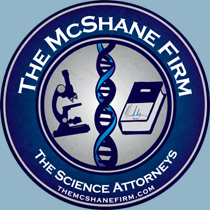Forensic Science “Matches”-The Case of Black Powder By: Frederic Whitehurst, J.D., Ph.D. [1] While reviewing case opinions in criminal matters involving forensic examinations one is often presented with various adjectives of comparison such as “matches,” “consistent with,” and “identical to.” Counsel seeing these adjectives in forensic reports may be elated if legal theories are supported […]

Why not stipulate to a forensic science result?
I was recently asked a question which is basically this: “Justin, why don’t you stipulate to any forensic science result ever?” My answer is simple. I haven’t found a single analytical test or a single forensic science result that does not have some area of legitimate inquiry whether it is in the data (the test […]

Guest Blog Post From Dr. Frederic Whitehurst PhD JD: “Matches” An Over inference of Data? A Giglio Obligation? The case of Paint Examination
“Matches” An Over inference of Data? A Giglio Obligation?: The case of Paint Examination By: Frederic Whitehurst, J.D., Ph.D. [1] and Darlene R. Brezinski, Ph.D.[2] Forensic chemical analyses of complex matrices such as plastics, paints, or paper products, may lead to inconclusive results without analysts or reviewing counsel aware of the failing of the analyses. Complex […]

Quality Control in GC-FID: Teaching the machine right from wrong
It is shocking but very true statement that most sophisticated instruments such as a Gas Chromatograph (GC) with various detectors whether it is a mass spectrometer (MS) or flame ionization detector (FID) when produced and manufactured are incapable of producing meaningful results “straight out of the box.” These machines have to be “taught” what it […]

Guest Blog Post From Dr. Frederic Whitehurst PhD JD: Mr. Fletcher vs. Mr. Daubert A Journey into the Surreal
Mr. Fletcher vs. Mr. Daubert: A Journey into the Surreal By: Frederic Whitehurst, J.D., Ph.D. Many a defense attorney has looked in amazement at the courtroom “identification” of Cannabis Sativa L. by a law enforcement officer sporting a gilded pot metal badge and a high school diploma who has written a report that would […]

The myth of specific identification of Marijuana in criminal court Part 7: Is there a better way to test for marijuana?
Throughout this series of posts we have examined the Thorton-Nakumura protocol that is used throughout the United States for the prosecution of illegal possession marijuana. A fair examination of the question reveals that there is no validity to the notion that the 3 test regimen produces a valid conclusion that the unknown examined in fact […]

The myth of specific identification of Marijuana in criminal court Part 6: Is the combination of all three tests create a “good” testing scheme?
The modern day prosecution for the unlawful possession of marijuana is based upon a three test regime involving microscopic morphological examination, modified Duquenois-Levine colorimetric testing, and Thin Layer Chromatography. Each of these three tests are non-specific for THC which is the pharmacodynamically active ingredient which makes marijuana illegal. The question becomes is this three test […]

The myth of specific identification of Marijuana in criminal court Part 5: What is Thin Layer Chromatography? Is it a “good” test?
All prosecutions for the unlawful possession of marijuana requires as an essential element of the crime for the government to advance proof that the unknown submitted for testing is in fact marijuana (contains THC). Can the government actually do that based upon its typical testing method? In this series of posts we are going to […]

The myth of specific identification of Marijuana in criminal court Part 4: What is the modified Duquenois-Levine test? Is it a “good” test?
In this series of posts we are going to examine this seemly simple question: What is the goal and the purpose of testing of unknowns generally? How do we best design a test for marijuana? How is most marijuana testing conducted in the United States? What is microscopic morphological examination? Is it a “good” test? […]

The myth of specific identification of Marijuana in criminal court Part 2: How is most marijuana testing conducted in the United States?
In 2006, more than 829,000 people were arrested in this country for marijuana-related offenses alone. Since 1937 with the passage and adoption of the Marihuana Tax Act, marijuana has been effectively prohibited in the United States. Literally millions upon millions of people have been accused of possessing marijuana. The question becomes are these convictions scientifically […]

First, let’s educate all of the lawyers
The great Bard once penned: All: God save your majesty! Cade: I thank you, good people—there shall be no money; all shall eat and drink on my score, and I will apparel them all in one livery, that they may agree like brothers, and worship me their lord. Dick: The first thing we do, let’s […]


